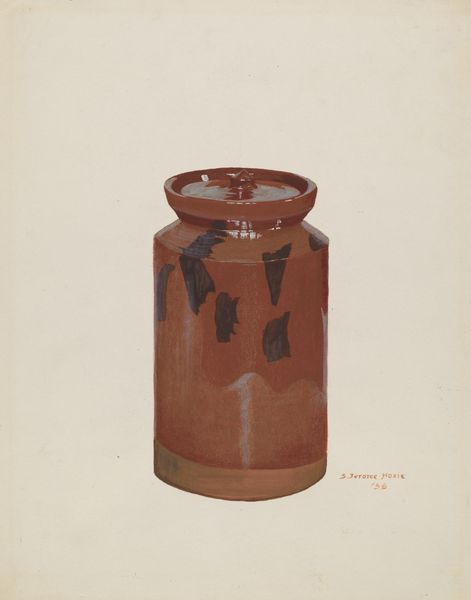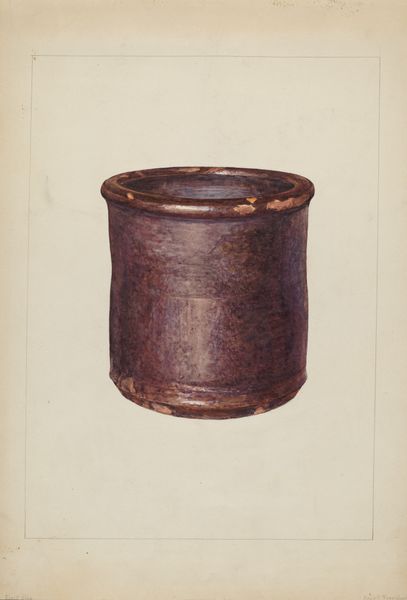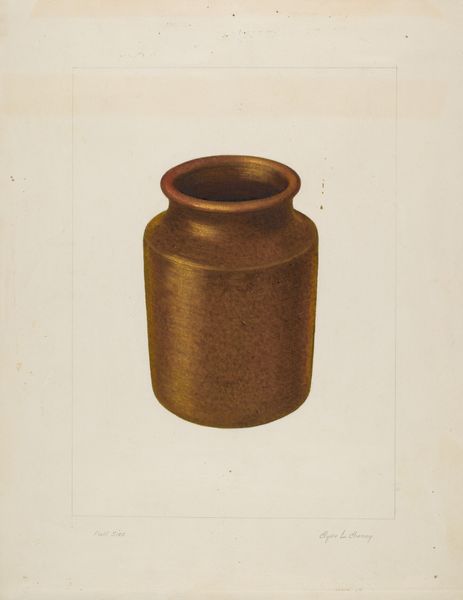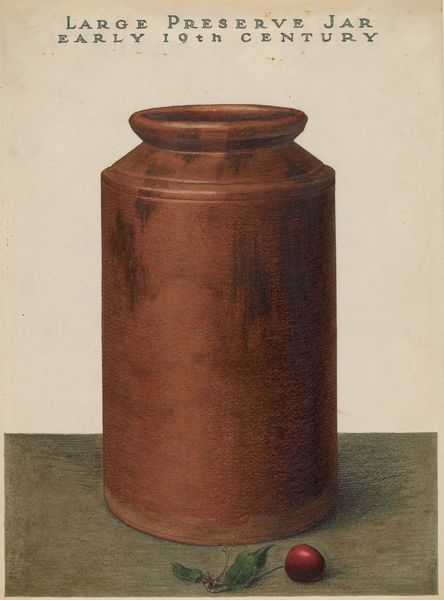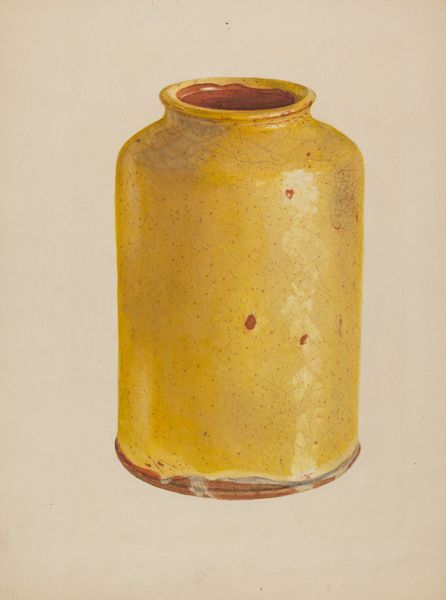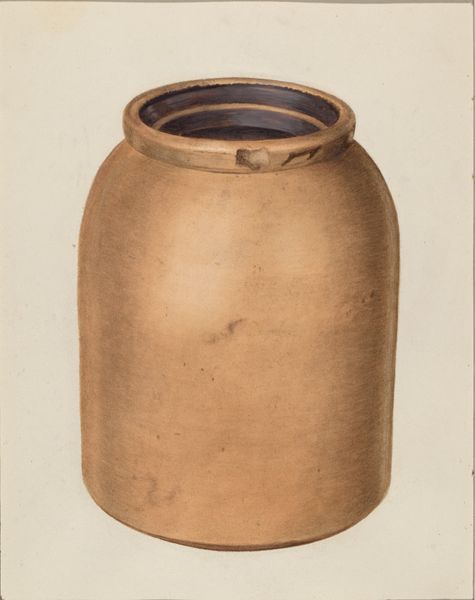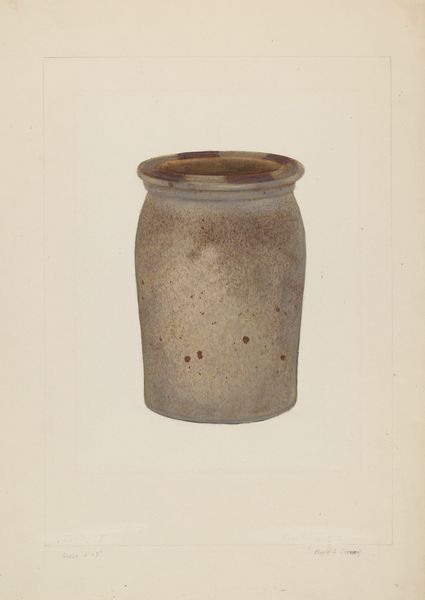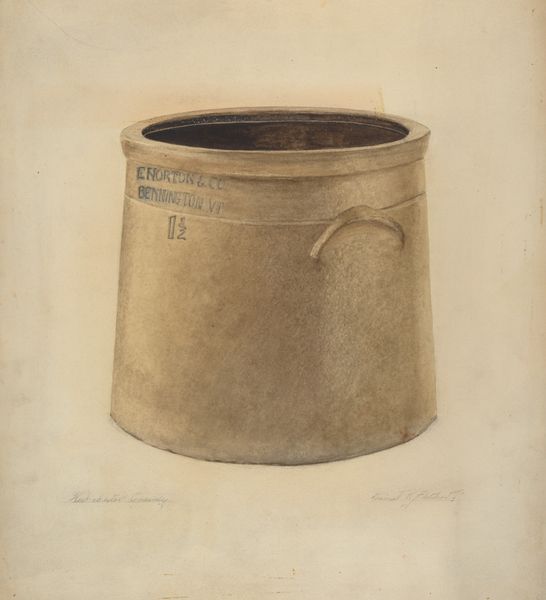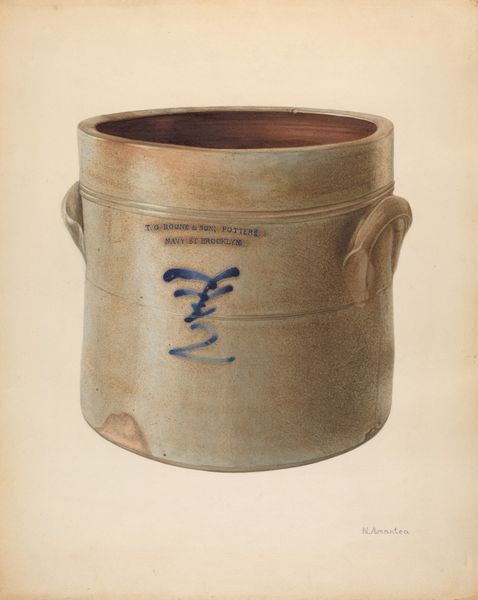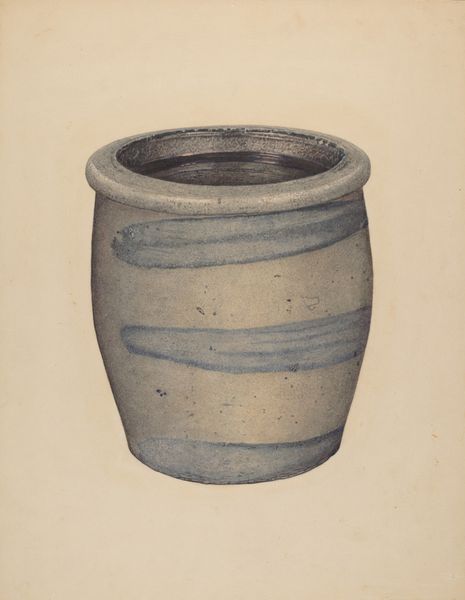
drawing, ceramic, watercolor
#
drawing
#
ceramic
#
watercolor
#
folk-art
#
ceramic
#
watercolour illustration
Dimensions: overall: 28 x 22.9 cm (11 x 9 in.) Original IAD Object: 12 3/8" High 6 3/4 " Dia. (top) 8 1/2" Dia. (base)
Copyright: National Gallery of Art: CC0 1.0
Curator: Looking at this lovely watercolour and graphite work on paper from 1936 titled "Churn," created by S. Jerome Hoxie, I can’t help but feel a certain nostalgia. Editor: Nostalgia indeed! I find myself immediately drawn to the unassuming vessel at its center. Its rough, earthy tones speak to a forgotten time of handmade crafts and utility. It has an inherent beauty, wouldn’t you agree? Curator: Absolutely. As the title suggests, this piece represents an implement used in the making of butter, speaking to domestic labour and the process of transforming raw ingredients through effort. I see a quiet monument to pre-industrial existence. Editor: The muted color palette further enhances the sense of quiet and humility. But it also carries layers of meaning, doesn't it? Think of vessels like this – symbols of containment, of hidden potential. It whispers of the secrets they held, the transformations they facilitated. Food preservation… alchemy even! Curator: I agree! This stoneware vessel transcends mere functionality. The form itself reveals craftsmanship, the lip created to support covering to preserve and protect it's contents. Editor: It makes you wonder, doesn't it? What recipes, what culinary stories does this image invoke in the viewers' imagination? The humble vessel now immortalized, frozen in watercolor. Curator: It seems such everyday object is now elevated through Hoxie's artistic choice. The careful study of its texture and subtle imperfections hints at a larger story of community life, shared meals, and inherited traditions. Editor: Precisely. "Churn" reminds us to look beneath the surface, to consider how mundane objects can act as powerful symbols carrying collective memory, stirring long lost stories within us. Curator: Yes. By turning his gaze on this overlooked item, Hoxie is subtly celebrating ordinary labour as intrinsically meaningful. It pushes us to reconsider what we value in our current climate. Editor: And it is through careful process of rendering the form itself in watercolour on paper. A new medium transforms clay into pigments that allow an ongoing conversation around cultural memory and domestic experience. Thank you for shedding some light on how we consume our histories! Curator: Indeed. This brief glimpse offers a powerful reminder of how much materiality shapes our past. Thanks for sharing such intriguing perspectives.
Comments
No comments
Be the first to comment and join the conversation on the ultimate creative platform.

